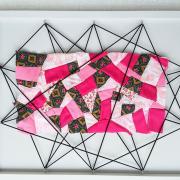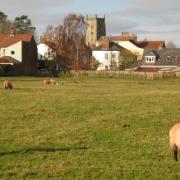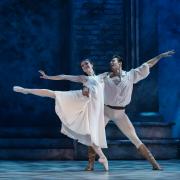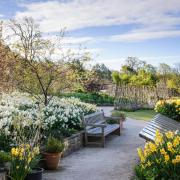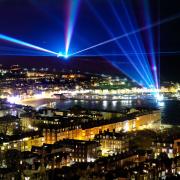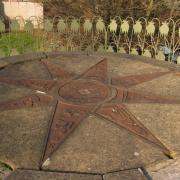The Friends of York Art Gallery share some of their favourite artworks

It began with Samson and Delilah, a dark, brooding oil on canvas by Pieter Soutman in which a rather plump Delilah cradles an exhausted looking Samson while her minions loom menacingly, scissors in hand.
The painting, which dates from 1642, was the first acquisition of the Friends of York Art Gallery, bought for £160 in 1949, just a year after the group was founded by inspirational curator Hans Hess.
‘Remember this was just after the war and he was a German Jewish Marxist, so was quite a challenging appointment,’ said current Friends’ president Peter Miller.
Hess wanted to bring together people with an interest in visual arts from across York and the surrounding area to help the gallery make key acquisitions, to fund conservation and preservation, to drum up sponsorship for exhibitions, to lead educational initiatives and to support academic research.
To this end, he set up The York Art Collection Society in 1948. By 1956, when it was renamed the Friends of York Art Gallery, it had 271 members and had spent more than £2,000 on artworks and conservation.
Today, York Art Gallery has more than 800 friends, who have spent almost half a million pounds on more than 100 works of art, including £44,000 (towards a total of £120,000) on William Etty’s Preparing for a Fancy Dress Ball; £44,156 (£84,208) on Grayson Perry’s Melanie; £2,390 (£3,780) on Pablo Picasso’s Bowl ‘Scene de Tauromachie’; and £4,500 (£50,000) on David Hockney’s Egyptian Head Disappearing into Descending Clouds.

‘The benefits to the gallery are numerous,’ said current senior curator Vera Pavlova. ‘The Friends support us in so many ways. They help us with acquisitions and research our collections, something that, unfortunately, we have very little time to do ourselves. They also help us with collection care and have built a strong bridge between us and the university.
‘The Friends have invested a lot of money in the gallery over the years, but it’s also their investment of time and enthusiasm that we value too.’
To mark the Friends’ milestone 70th anniversary, we spoke to members about their experiences, their views on the York collection and their favourite pieces…

Peter Miller
Pictured with David Hockney’s Egyptian Head Disappearing
‘I’ve lived in York since my university days and got to know the curator who came after Hans Hess. I thought at the time that I’d like to work in museums, but I actually ended up running Spelman’s (a renowned rare book specialist in Micklegate) for more than 40 years.
‘I joined the Friends in the Seventies. The city has such a rich and varied collection. The Hockney, in particular, is a very important and, I believe, very exciting work. It’s a sketch from a much bigger piece, showing Hockney before he became the Hockney we know now. It shows his transformation.
‘Pieces like this give the gallery and the Friends the opportunity to put our ambitions into practice; to, if you like, put our money where our mouth is.’

Dorothy Nott
pictured with Henri Gaudier-Brzeska’s Bust of Alfred Wolmark
‘After retiring from a private law practice in York, I became a member of the history of art department at the university, first doing an MA and then a PhD. This obviously involved a lot of visits to the art gallery which, in turn, led to my introduction to the Friends. ‘I joined at a challenging time as there wasn’t actually a gallery for people to visit. It was closed for refurbishment for a long time and then, when it reopened, we had to deal with the controversial introduction of an admission charge.
‘The interesting thing is we actually increased our membership when the gallery was closed and, of course, were still very busy fundraising, including £70,000 for the new stores. Our work is not just about securing new acquisitions, you see, it’s also about taking care of the works we already have.
‘I love this particular work (the Bust of Alfred Wolmark) because it has such strength and vitality. If you saw this man in the street, you would stop and stare. It’s not quiet and contemplative; it’s almost pugilistic in its attitude. You can see straight away that both the artist and the subject were extremely challenging people.’

Professor Charles Martindale
Pictured with Domenichino’s Portrait of Monsignor Giovanni Battista Agucchi
‘I’m married to an art historian who’s a professor at the university. I’m a classicist myself, but I have always been a collector of art, particularly from the 19th and early 20th century. I started by collecting ceramics – mainly Staffordshire flatback figures – when I was 12.
‘When we moved to York five years ago, I could see the gallery had a very large collection of very decent paintings. If I’m being honest, I would like us to be more ambitious in our acquisitions; we need something to move us up into another league. ‘I can say, however, that York already has a good set of portraits. This one (nominally by Domenichino, but not definitively so) is particularly important; so much so that, when we closed for refurbishment, it was taken to the National Gallery.
‘It’s a particularly successful portrait as it suggests an encounter between you and the subject. You feel they are a real person; someone you could have a conversation with. It also says a great deal about the painter and his subject. It’s informal and somewhat intimate, obviously illustrating a pre-existing friendship.’

Louise Wheatley
Pictured in York Art Gallery’s Centre of Ceramic Art
‘I came to York to administrate at the Merchant Adventurers’ Hall with my husband, curating and researching its collection. I went on to do an MA on the organisations of the Merchants Guild and a doctorate on the Mercers of York. I then started teaching at the Centre for Lifelong Learning.
‘I find the ceramics collection at the gallery particularly interesting – its so diverse and diverting. Paul Young’s Dovecot, for instance, seems naïve, but is actually very sophisticated in its execution. And I’m consistently enthralled by Picasso’s bowl.
It started out as an experiment with clay and glazes, but the end result is such a cleverly-devised scene; it’s a ceramic, a sculpture and painting all in one.
Friends’ chairman Peter Gibbard
Pictured with Merete Rasmussen’s Yellow Open Form
‘I retired six years ago and my wife, a life member of the Friends, suggested that, as I enjoyed wandering round art galleries, maybe this could be for me. It turned out the group was looking for a secretary and I volunteered to help.
‘We now have 856 members. Membership hasn’t grown in proportion to York’s population, but we still have a healthy number.
I think it’s important to stress that we’re not just about raising money for acquisitions, we also give talks, work closely with the department of history of art at the University if York, liaise with other Friends groups around the country and go on trips together.’
Who was Hans Hess?
Hans Hess was appointed curator at York Art Gallery in 1948, when the gallery reopened after being bombed during the Second World War.
He quickly set up The York Art Collection Society, which had 170 members by the end of its first year.
Hans was born into a prosperous Jewish manufacturing family in Erfurt, Germany, in 1908. His father, Alfred, spent some of his shoe factory fortune on German Expressionist Art and set up the Society of Friends of Erfurt Art Gallery.
Hess Jnr was educated at two progressive boarding schools in Germany before studying in Geneva and at the Sorbonne in Paris.
:: He returned home, aged 21, to help run the family business. Then, in 1932, moved to Berlin to work for the publisher, Ullstein, and to share a flat with Elizabeth Hauptmann, Bertold Brecht’s collaborator.
When Hitler came to power in 1933, Hans was dismissed from his job because he was Jewish. On moving to London in 1935, he became one of the founders of Inside Nazi Germany, a magazine that sought to show the world what was really going on in his home nation and, in 1938, helped launch the Free German League of Culture, which had a membership of more than 1,000 emigrant artists and writers by the end of 1939.
Hans was interned as an enemy alien on the Isle of Man, from where he was deported to Canada. He was allowed to return to Britain in 1942.
He joined his mother, Thekla Pauson Hess, in Leicester, where he was persuaded to work at the City Art Gallery by its director Trevor Thomas.
Hans was appointed curator at York Art Gallery in 1947, moving his wife, fellow German refugee Lillie Williams, and their daughter, Anita, to Skeldergate.
Celebrating a lasting friendship
A special exhibition – 70 Years of Giving Art: Celebrate the Friends of York Art Gallery – will be launched at the gallery on May 4th.
Other events in York Art Gallery’s spring calendar include lunchtime talks by: Madeline Boden in the Burton Gallery on Loretta Bragazna’s The Twelve Apostles, a ceramic work bought with a grant from the Friends, on April 11th; Professor Charles Martindale in the Burton Gallery on April 25th, when he’ll be talking about what makes a good portrait (concentrating on the Monsignor Giovanni Battista Agucchi painting); and Friends’ chairman Peter Gibbard on inspirational curator Hans Hess on May 9th.
For full details of all events, talks and trips organised by the Friends of York Art Gallery – and for information on how to become a member – visit friendsofyorkartgallery.co.uk.








